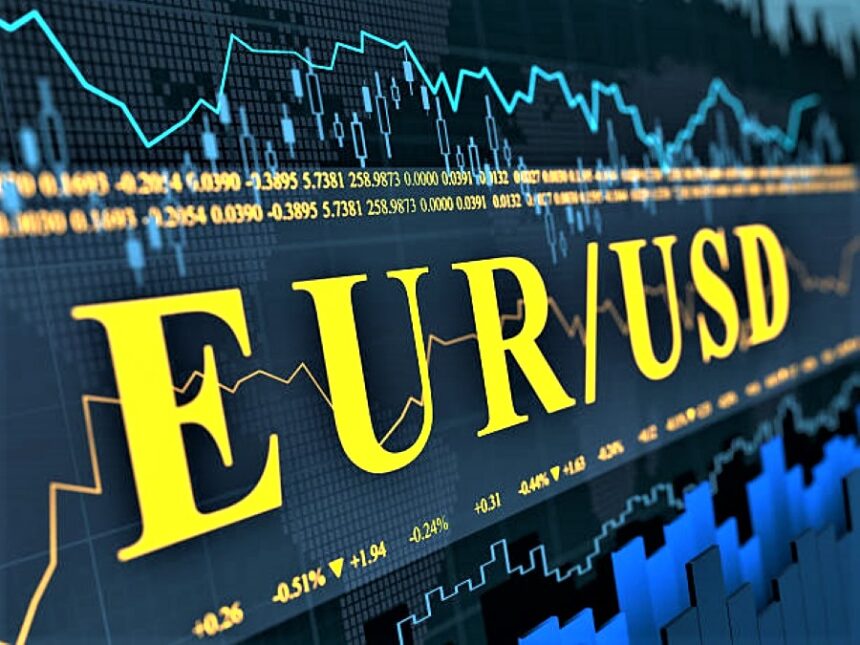EURUSD Struggles for Direction Amid Pre-Data Market Tension.
The EURUSD pair trades cautiously near 1.1350 in European trading on Monday, as traders brace for a high-impact data week from both the United States and the Eurozone. The Euro (EUR) remains on the defensive, underperforming against its peers, as investor sentiment weakens ahead of key macroeconomic indicators — particularly the flash Harmonized Index of Consumer Prices (HICP) for April and the first-quarter Gross Domestic Product (GDP) data from the Eurozone’s leading economies.
This cautious trading comes at a time when global market players are growing increasingly concerned over renewed trade tensions between the United States and China, while lingering uncertainties surrounding US-Eurozone trade relations further dampen risk appetite. The US Dollar (USD), meanwhile, holds steady, supported by expectations of firm domestic economic activity, although contradictory signals from Washington and Beijing continue to keep broader sentiment in check.
Eurozone Data in Focus: Inflation and Growth Numbers Could Decide ECB’s Next Move
The upcoming economic calendar promises to be eventful, with Eurozone inflation and GDP figures at the center of attention. The flash HICP print expected to show headline inflation easing back to the European Central Bank (ECB)’s 2% target, the slowest rate of price growth since October 2024. This would mark a notable moderation from March’s 2.2% annual gain.
At the same time, first-quarter GDP is projected to grow at a modest 0.2% quarter-on-quarter, signaling steady — but not spectacular — economic momentum in the bloc.
A softer-than-expected inflation reading could reinforce market expectations that the ECB will proceed with an interest rate cut at its June meeting. According to market consensus, the probability of a 25-basis-point rate cut in June has steadily risen, especially as core inflationary pressures show signs of easing amid geopolitical uncertainties and weaker global demand.
ECB Policymakers Lean Toward June Rate Cut, But Scope Remains Limited
Adding to the dovish tone, a Reuters report over the weekend suggested that ECB officials are growing more confident about lowering borrowing costs in June, even though appetite for an aggressive rate-slashing cycle remains low. The report, however, did not name specific policymakers behind these views, which leaves some ambiguity regarding the strength of consensus within the ECB Governing Council.
Meanwhile, Klaas Knot, President of the Dutch central bank and a key ECB policymaker, added an extra layer of nuance over the weekend. In an interview with Dutch financial daily FD, Knot cautioned that the June policy decision would be “complex,” noting that long-term inflation risks were now “skewed on both sides.” He also pointed to potential disinflationary effects from newly announced US tariffs, suggesting that external demand shocks could weigh heavily on the Eurozone’s fragile recovery.
“In the short term, it’s 100% clear that the demand shock will dominate, so inflation will go down,” Knot said, hinting at the possibility that further geopolitical frictions — especially trade tensions — could pull inflation below target even more decisively.
Geopolitical Tensions Cast a Shadow Over the EURUSD
On the international stage, the outlook for Eurozone-US trade relations remains cloudy. European Union Economic Commissioner for Trade Valdis Dombrovskis expressed skepticism over reaching a comprehensive trade agreement with the US anytime soon, during remarks at the International Monetary Fund (IMF) meetings in Washington.
“There’s a lot of work ahead to come to more concrete parameters and elements and areas of cooperation which would allow us to avoid the implementation of tariffs,” Dombrovskis warned.
Such cautious rhetoric adds another layer of downside risk for the Euro, as investors grow wary of potential retaliatory measures and trade barriers that could slow down already fragile Eurozone exports.
Market Sentiment: Risk Aversion Rules the Day
The broader market mood remains one of caution. Conflicting reports about the status of US-China trade talks are muddying the waters, keeping risk assets under pressure and underpinning safe-haven demand — though not sufficiently enough to spark a major rally in the USD so far.
President Donald Trump reiterated late last week that trade negotiations between Washington and Beijing were progressing. Yet Chinese officials have directly contradicted these claims, stating that no such negotiations are currently ongoing.
In a statement to Reuters, a spokesperson from the Chinese embassy bluntly said, “China and the US are not having any consultation or negotiation on tariffs.” Later, Trump added in an interview with Time Magazine that Chinese President Xi Jinping had called him “numerous times” following the rollout of Trump’s latest tariff plan — though no independent confirmation of such conversations has been provided by US Treasury officials.
In fact, Treasury Secretary Scott Bessent explicitly stated he was unaware of any such calls taking place, further adding to the confusion.
This divergence in official narratives from Washington and Beijing is encouraging investors to tread cautiously, limiting moves in both directions in the forex markets, especially for major pairs like EURUSD.
Key Drivers: Behind EURUSD Latest Moves
- EURUSD edges lower: The Euro is weighed down by caution ahead of critical Eurozone inflation and GDP data. Meanwhile, the US Dollar trades largely sideways, trapped between resilient US economic indicators and uncertainty over US-China trade developments.
- Contradictory trade signals: While Trump maintains an optimistic tone on trade talks with China, Beijing’s firm denial has injected doubt into markets. This has increased short-term volatility without offering clear directionality.
- ECB rate cut bets rise: Growing conviction among ECB policymakers for a June interest rate cut has pushed the Euro lower. However, limited scope for an aggressive easing cycle tempers the downside pressure.
- Global trade tensions: European policymakers remain cautious on prospects for a trade deal with the US, with concerns mounting about new tariffs disrupting the fragile Eurozone economic recovery.
- Focus on economic data: US and Eurozone economic data releases, including inflation, GDP, and employment figures, will be pivotal for determining near-term forex market trends.
EURUSD Outlook: What’s Next?
The EURUSD is likely to remain in a consolidation phase around the 1.1350 level until traders get clarity from this week’s major data releases. A downside break below 1.1300 could trigger a deeper retracement toward 1.1250 if Eurozone inflation shows stronger-than-expected cooling and US data remains firm.
Conversely, a surprise upside beat in Eurozone GDP or inflation could rekindle bullish momentum, pushing the pair toward 1.1400–1.1420 resistance areas.
Volatility is expected to remain elevated as both macroeconomic fundamentals and geopolitical headlines dominate trading decisions in the days ahead.
[faq-schema id=”39466″]









